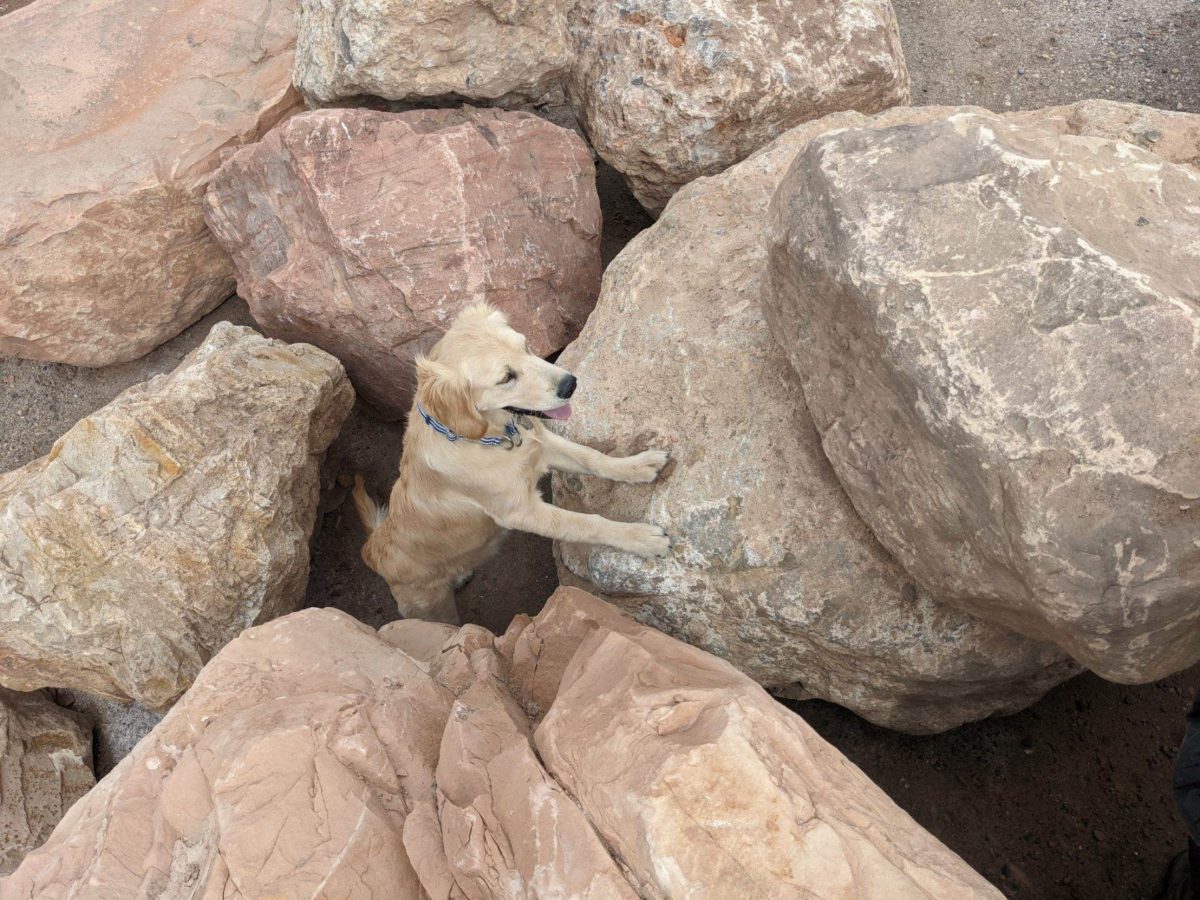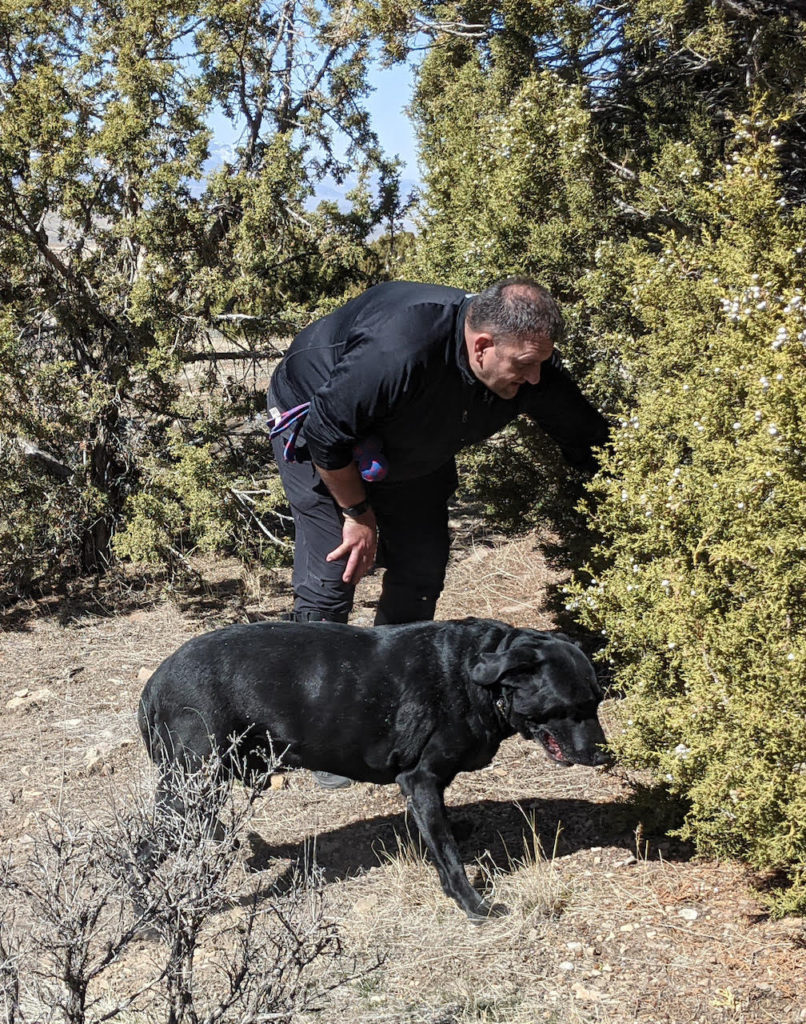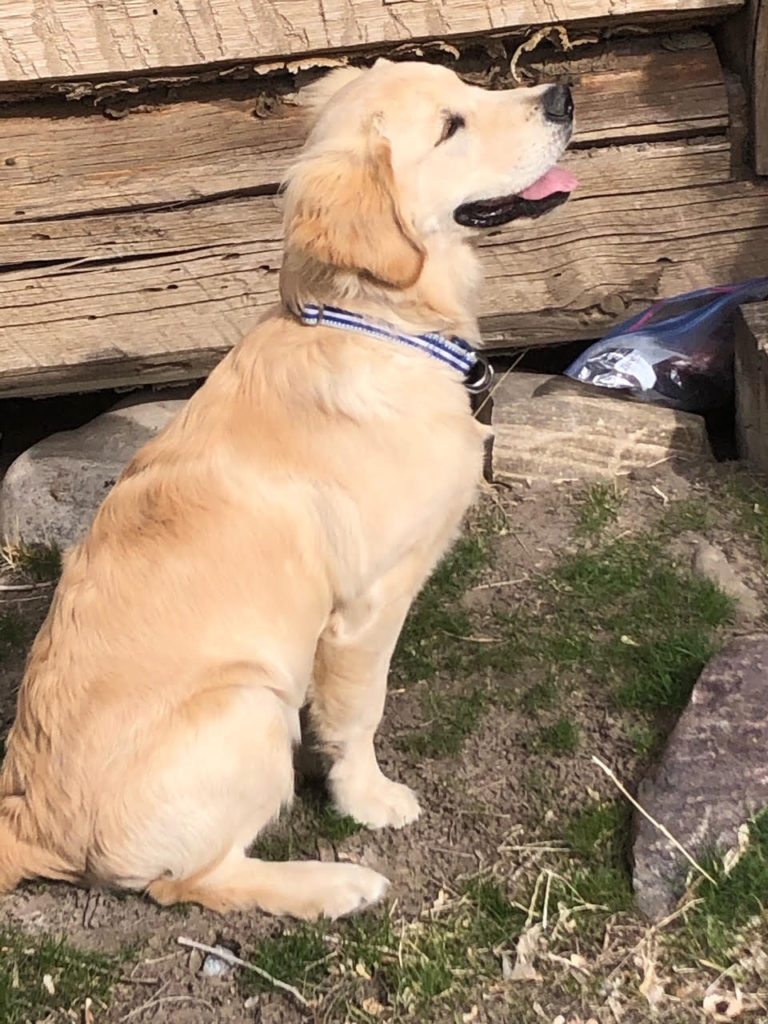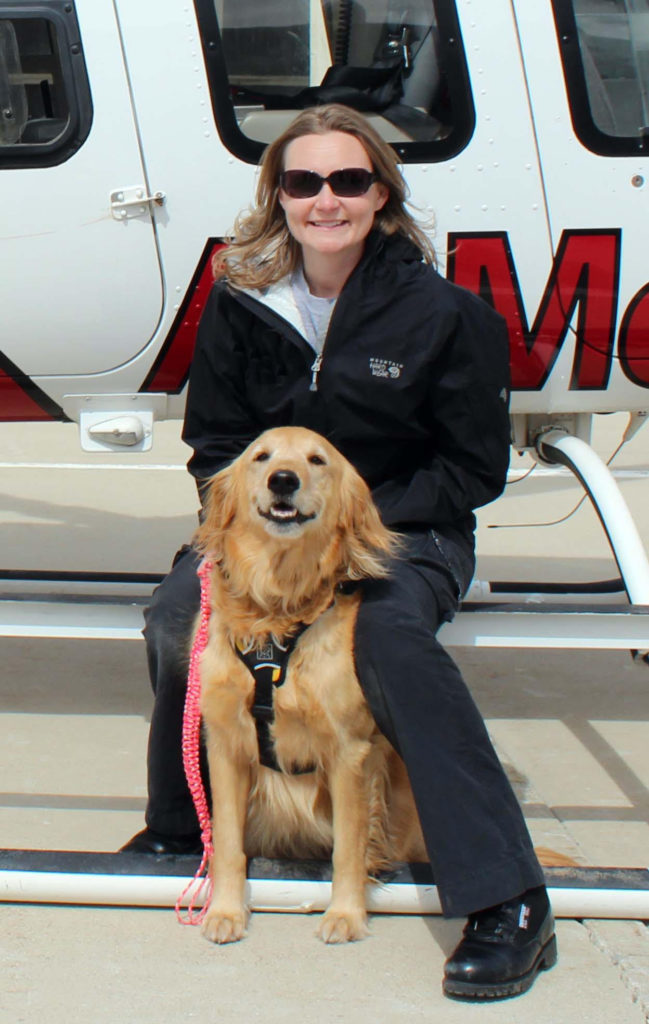
Searching For Life, And Bringing Closure: A Canine Training Story
By Kacy Robinson
There is nothing more important to a search and rescue handler than his or her canine. We have multiple tools at our disposal depending on the circumstances of the search, but without our canine partners, we are not searchers. Our canine partners are the single greatest tool we have, but they are not simply a tool, they are our greatest asset.
Fifteen years ago, when I first became a search and rescue canine handler, I found myself in a world where my focus shifted to the needs of my partner and the bond we share. Suddenly, my focus was not simply on my training and ensuring my skills were of the highest level, but ensuring that her innate skills were being interpreted properly by me, and were utilized as successfully as possible.
Having been in search and rescue and law enforcement for many years prior, I understood the necessity of honing my professional skills. Suddenly, I was responsible for another individual with needs and a personality who is also of a different species. I had to quickly learn that my needs are not a priority.
When I am in the field searching or training for a search, I must be able to completely trust my canine partner in every situation, and she must trust me fully. Our safety and our lives can depend upon the trust we have for one another. Relying on her abilities and her skills allows us to be successful as a team and to bring resolution in the case we are working on. Likewise, she must rely on me to ensure I place her in situations where she will be safe and can be successful.

Canines are not magic. Our jobs would be much easier if they were, but they cannot be successful without us. Canines have innate abilities with scent that allow them to complete search work in ways no human can. The job of the human searcher is to utilize those skills in ways that will result in the greatest success.
This is accomplished in several different ways, one of which is taking all the variables of the search (i.e. terrain, weather, vegetation, missing person, victimology, circumstances of the search, wind speed and direction, etc.) and the other is training for all probable search scenarios.
As a member of Fide Canem Cold Case, Inc. I spend hundreds of hours consulting cases and researching real-world missing persons scenarios. This information is then incorporated into the training we conduct from the very beginning with our new puppies. While every searcher has their own way of training their canine, we believe that best way to train our canines is to enhance and interpret their innate abilities.
Canines are born with the innate ability to scent in phenomenal ways. It has been proven that they can scent a single fingerprint on a pane of glass left in the elements for two weeks. Training a canine for search work means harnessing this ability and interpreting it, all the while not speaking the same language. This means we, as humans, have to learn to read their body language and decipher all those little clues they are giving us. It requires both the canine and the handler to form a bond beyond that is unbreakable. This bond is the most important part of training a search canine.
As most animal lovers understand, our critters provide unconditional love and companionship that is unlike any other relationship we have. Working with a search canine is at an even greater level. Knowing you have to depend upon one another in difficult situations deepens the bond and helps you quickly realize the importance of reading one another. You cannot be successful without that connection.
On average it takes approximately 1,200 solid hours to train a canine for basic search deployment. Further, it takes at least 600 hours per year to maintain deployment status. Basically, this means the canine handler must constantly and consistently be training his or her canine in every situation they could potentially face during a search, and then maintaining that training throughout the life of the canine.
We are often asked how you begin training a canine, and what is important to incorporate into that training. The first part of this answer deals with the type of search dog being trained. There are many different types of canine search training. Some teams only search for missing people who are living. Some train for those who have died. Some do a combination of both. Some teams train to recover evidence. And finally others, like Fide Canem Cold Case, Inc. train for aged missing persons. The focus of the training depends upon the types of searching in which the canine will be involved.
If the search team focuses mainly on live-find searches, the canine will train on live human scent. If you focus mainly on searches for deceased individuals, the canine will train on cadaver scent. If you are involved in both types of searches, you will incorporate both live and cadaver scent into your canine training.
As a member of a cold case team who will also deploy on critical incidents such as disaster recovery and missing children, I train my canines for all human scent. This means my canines must train for and be able to recognize every type of human scent from live to skeletonized. This also means that when conducting training with my canines, I must utilize all these types of scents in a variety of different scenarios that may be faced when deploying on a case.
We prefer to begin training our canines as early as possible. Currently, I am training a new puppy and his work began the day we were introduced. I chose him from his littermates because he was independent and willing to be adventurous on his own, while also being cognizant of the humans around him. I want to ensure he will work independently from me as a handler yet still rely on me for safety and direction when necessary.

From the moment he came into my life, our training commenced. We began with typical obedience commands and working on our bond. Training canines to be intelligently disobedient is my key to having a successful search canine. This means I want to ensure they will listen to me when necessary, but are willing to also ignore me if I am going the wrong direction or leading them away from the area where the scent is located.
It took almost not finding a victim on search for me to understand the importance of this. Many years ago, I was working with my first search canine, Uintah. We were on our second deployment together searching for an individual who had been missing for ten days. We began the search at the victim’s point last seen (the area where his car was found and he was last known to be). The other canines on the search began leading their handlers toward the city. Uintah began leading me to the highway. We continued our search towards the highway. Uintah was providing indication that she was on scent, so we continued.
When we reached the highway, I glanced at my search map. The highway was the boundary for my search area. However, I noticed there were large drainage pipes under the highway. Thinking the victim may have used the pipes for shelter, I placed Uintah in a sit-stay and began to search the pipes. Uintah broke her sit-stay three times. Each time I would place her back into the sit-stay, she would break and come to my side.
After realizing she was not going to stay, I placed her by my side and we searched the pipes together. We cleared the pipes and found no indication the victim had sheltered there. I then consulted my search map again. As it was the boundary of my area, I attempted to formulate our next steps. In my mind, I was trying to decide whether to double-back into the area where there were more points where the victim could shelter or to return to incident command and await further instructions from our commander.
I placed Uintah back to work with her search command. It was at this point she decided to take action and leave me behind. She knew all along that the victim was on the other side of the highway and the only way we were going to reach him was if she didn’t listen to me but trusted her own instincts and her training.
Without warning, she bolted across the highway. By the time I reached her, she was twenty feet on the other side of the highway with the deceased individual. If she wasn’t willing to leave me behind, we would not have found the missing person. I am forever grateful for the lessons she taught me that day.
Not only did she teach me to allow my canine to have independence and agency to leave me when I would walk away from a victim, but she taught me to trust her, to trust her instincts and that we are partners. As her handler, I must do everything I can to ensure she can be successful, but without her abilities, instincts, and independence, we cannot be successful.
Training for independence can be difficult for us as canine handlers because we want to control for all variables, yet we are often most successful when training our canines to utilize their innate abilities and to trust us to place them into situations where they can be the most successful. This means we must trust them just as they trust us.
Fide Canem — Trust the Dog.

Author Bio: Kacy Robinson got her associate of science degree in Criminal Justice at the College of Eastern Utah and followed it up by certifying as a Crime Scene Analyst from the Utah Bureau of Forensic Services Crime Scene Academy. She also has a BA Communications through the University of Utah and an MS in Computer Forensics from the Henry Lee College of Forensic Science at the University of New Haven. While attending, she was the Lead Archivist on the Robert F. Kennedy Assassination Project, and spent twelve years with the oldest and largest search and rescue organization in the state of Utah with her two canine partners, the late Uintah, and Wahsatch, both Golden Retrievers.
In 2017, Kacy and search partner Bret Sayer established Fide Canem Cold Case, Inc., the first search and recovery team focused exclusively on cold case missing persons and evidence recovery. Bret is a Salt Lake City native who has worked in public safety and security for 20 years. As security manager for a major corporation, he oversees a team of more than 50 officers. Bret attended Weber State University in Ogden, Utah, with a focus on Criminology, Forensics, Chemistry and Laws of Evidence. He is a K9 Human Remains (Cadaver) Handler in tandem with Halo, his 6-year-old Black Labrador Retriever, and has been a search and rescue K9 handler for 8 years. He was assigned to be the callout coordinator and law enforcement liaison in deploying and activating search and rescue teams. Kacy and Bret can be reached here.